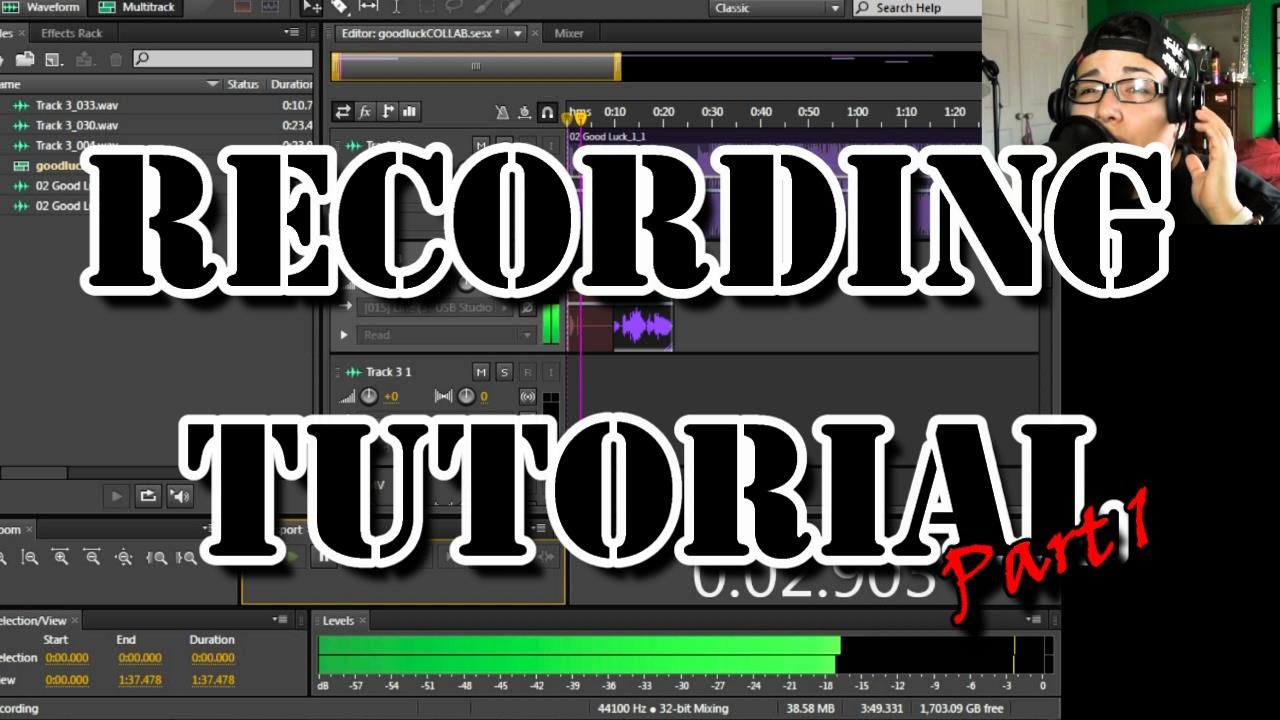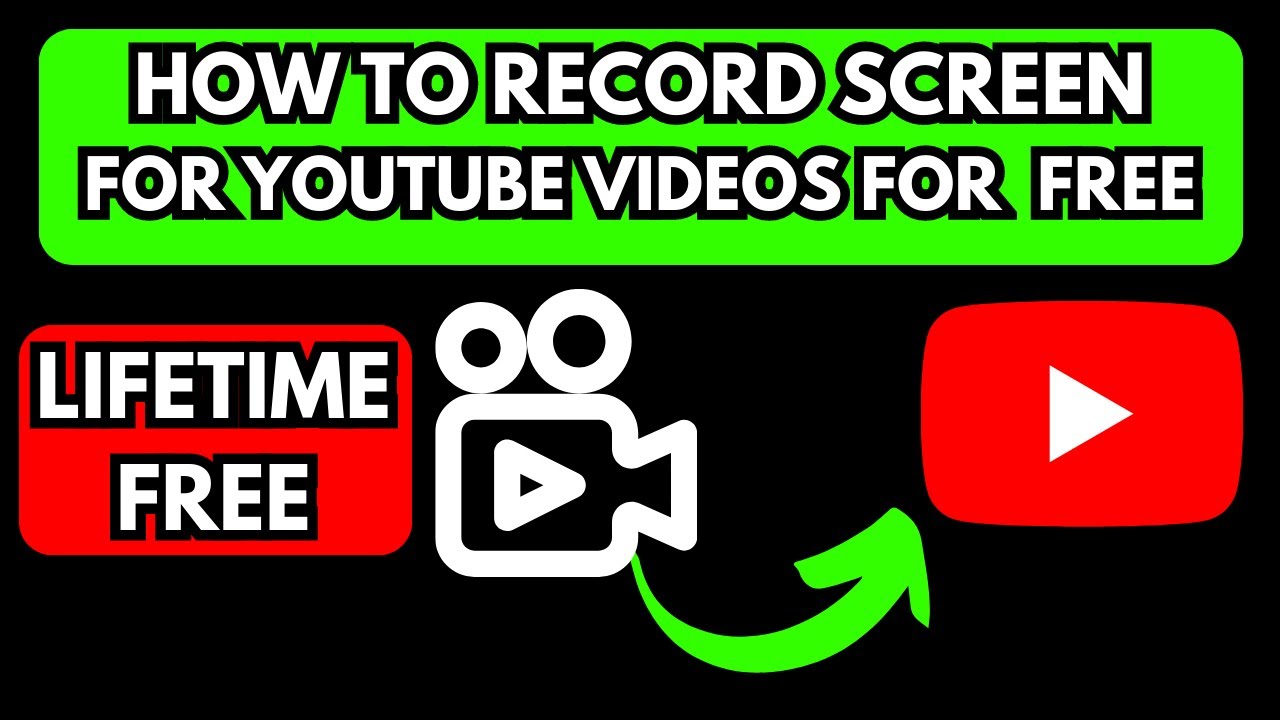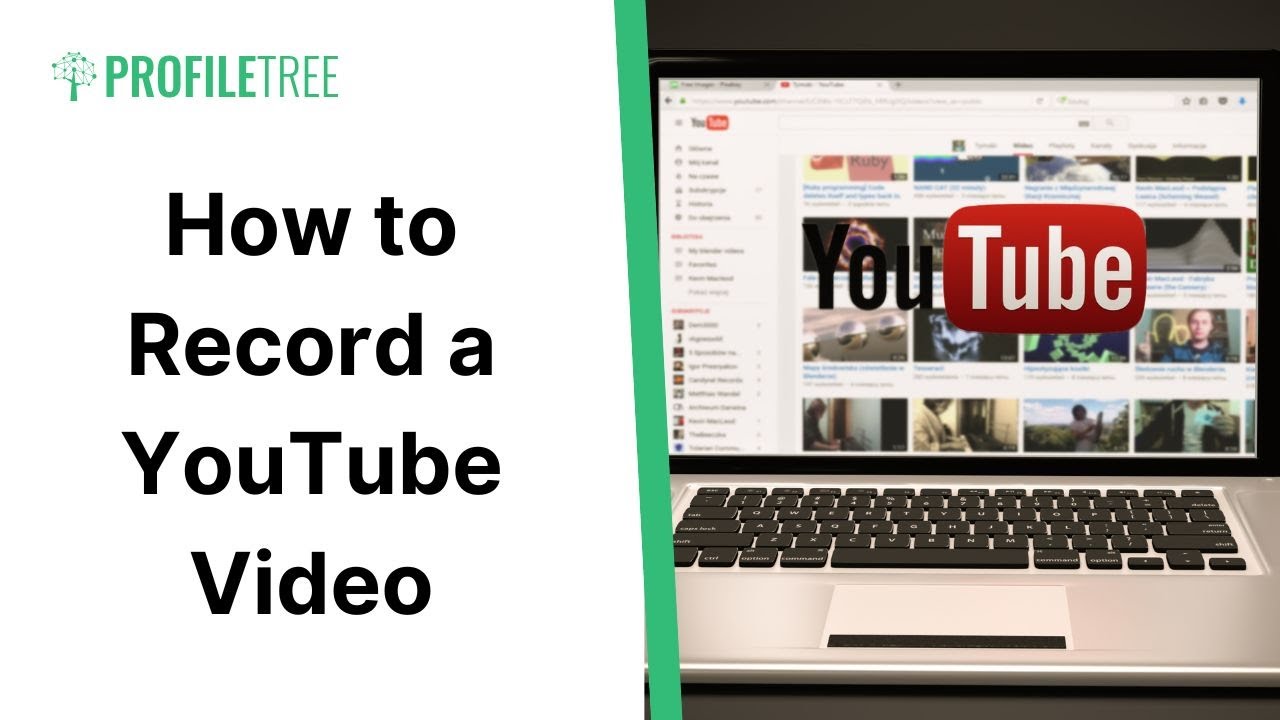Are you eager to capture your favorite YouTube videos for personal use or to share with friends? You're in the right place! Recording videos from YouTube can be a straightforward process, even for beginners. In this post, we’ll guide you through the essential steps and highlight important considerations to ensure you're on the right track. Let’s dive in!
Understanding YouTube's Policy on Recording Videos

Before you hit that record button, it's crucial to understand YouTube's policies regarding video recording. YouTube is a platform that champions content creators, and they have specific rules designed to protect their work. Here are a few key points to keep in mind:
- Copyright Protection: Most videos on YouTube are protected under copyright law. This means you can’t just record and redistribute them without permission from the creator.
- Personal Use: If you plan to record videos for personal use, such as watching offline or for educational purposes, you might be in the clear. However, sharing those recordings publicly could lead to issues.
- Fair Use: Familiarize yourself with the concept of fair use. This legal doctrine allows limited use of copyrighted material without permission, particularly for commentary, criticism, news reporting, and education. But remember, the lines can be blurry, so proceed with caution.
- Download Options: YouTube offers a 'Download' feature for certain videos via its mobile app, allowing you to watch offline. However, this feature is often restricted to specific content and users.
To navigate these waters smoothly, consider reaching out to the original creator for permission if you intend to use their video beyond personal enjoyment. This simple step can prevent any potential legal issues and foster goodwill within the YouTube community.
In summary, while recording YouTube videos can be tempting, always ensure you respect copyright laws and the rights of content creators. By doing so, you not only safeguard yourself but also contribute positively to the vibrant ecosystem that YouTube fosters.
Also Read This: How to Play YouTube Videos in VLC Player: A Simple Tutorial
3. Essential Tools You Need to Record YouTube Videos

Before you start recording videos from YouTube, it’s crucial to equip yourself with the right tools. Here’s a handy list of essentials you’ll need:
- Screen Recording Software: This is the heart of your recording setup. Popular options include:
- OBS Studio: Free and open-source, great for both beginners and advanced users.
- Camtasia: A paid option that offers powerful editing features.
- Screencast-O-Matic: User-friendly and perfect for quick recordings.
- Audio Equipment: Clear audio makes a huge difference. Consider investing in:
- USB Microphone: Like the Blue Yeti, for high-quality sound.
- Headphones: To monitor your audio as you record.
- Video Editing Software: After recording, you might want to edit. Here are some great tools:
- Adobe Premiere Pro: Professional-grade software with extensive features.
- Filmora: User-friendly and perfect for beginners.
- iMovie: Ideal for Mac users looking for simplicity.
- Stable Internet Connection: A stable connection ensures smooth streaming and recording, so make sure you're connected to reliable Wi-Fi.
- Screen Capture Device (optional): If you prefer recording on a console or camera, consider devices like the Elgato Game Capture.
Gathering these tools will set you on the right path to successfully record YouTube videos. Once you have your setup, you’re ready to dive into the recording process!
Also Read This: How Old Is Elliot, the Popular Gorilla Tag YouTuber, and What Is His Background?
4. Step-by-Step Guide to Recording Videos from YouTube

Now that you have your tools ready, let’s walk through the steps to record videos from YouTube. Don’t worry; it’s much easier than it sounds!
- Choose Your Screen Recording Software: Open the software you’ve selected (like OBS Studio or Camtasia). Make sure it’s up to date to avoid any glitches.
- Configure Your Settings: Adjust the settings according to your needs:
- Choose the screen area you want to record.
- Set the audio input (your microphone) and output (system sound).
- Open YouTube: Navigate to the video you want to record. Make sure it’s in high definition for better quality.
- Start Recording: Hit the record button on your software. You might want to record a short test segment to check audio and video quality.
- Engage with the Content: If you plan to add commentary, start talking about what you see. This makes your recording more engaging!
- Stop the Recording: Once you’ve captured what you need, click the stop button. Save your recording in your desired format.
- Edit Your Video (if necessary): Open your video editing software and import your recording. Here, you can trim, add effects, or overlay audio.
- Export Your Final Video: Once you’re happy with your edits, export your video. Choose a quality that suits your purpose, whether it’s for personal use or sharing online.
That’s it! You’ve successfully recorded a YouTube video. With practice, you’ll find your rhythm and develop your style—so don’t hesitate to experiment and have fun along the way!
Also Read This: How to Bypass YouTube Adblock Detection on Opera GX: Tricks and Tips
5. Tips for Recording High-Quality YouTube Videos
So, you’ve decided to dive into the world of recording YouTube videos! That’s awesome! To ensure your videos come out looking professional and engaging, here are some easy tips to keep in mind:
- Choose the Right Environment: Find a quiet place with good lighting. Natural light works wonders, so set up near a window if you can. If you're indoors, avoid cluttered backgrounds that can distract viewers.
- Invest in a Good Microphone: Clear audio is crucial! Consider getting a lavalier microphone or a USB condenser mic to capture crisp sound. Trust me, your viewers will appreciate it!
- Use a Tripod: Shaky footage can be a major turn-off. Using a tripod keeps your camera steady and creates a more polished look. If you’re filming on your phone, there are plenty of affordable phone tripods available.
- Frame Your Shot: Position yourself in the center of the frame, leaving a bit of headroom. Use the rule of thirds to make your footage more visually appealing. You can even practice your framing by doing a few test shots!
- Check Your Settings: Before hitting record, make sure your camera settings are optimized for video. Shooting at 1080p is generally a good standard for YouTube. If your camera allows, try recording at 30 or 60 frames per second for smoother motion.
Remember, the quality of your videos reflects your effort and dedication. Taking these simple steps can drastically improve the quality of your recordings, making your content more enjoyable for viewers!
Also Read This: Adding YouTube Songs to Spotify Step-by-Step Instructions
6. Editing Your Recorded Videos
Once you've captured your footage, it’s time to dive into the exciting world of video editing! This step is crucial as it can elevate your video from ordinary to extraordinary. Here’s how to get started:
- Choose the Right Editing Software: There are many user-friendly options out there, even for beginners! Software like iMovie and Shotcut are excellent for basic editing tasks, while Adobe Premiere Pro or Final Cut Pro provide more advanced features for when you're ready to level up.
- Organize Your Clips: Before you begin editing, organize your footage. Label each clip with descriptive names so you can easily find what you need. This will save you lots of time during the editing process!
- Add Transitions: Smooth transitions between clips can help your video flow better. Experiment with different styles, but be careful not to overdo it! Simple cuts or fades often work best.
- Incorporate Music and Sound Effects: Background music can set the mood for your video, while sound effects can enhance key moments. Just ensure you have the rights to any music you use to avoid copyright issues. Websites like Bensound or Incompetech offer royalty-free tracks.
- Export in the Right Format: Once you're happy with your edits, export your video in a format suitable for YouTube. MP4 is the most commonly used format as it balances quality and file size well.
Editing might feel daunting at first, but it's a skill that gets easier with practice. Take your time, experiment, and soon you’ll be creating videos that not only tell your story but captivate your audience!
Also Read This: Does YouTube TV Offer Turner Classic Movies (TCM)? Channel Availability Explained
7. Legal Considerations and Copyright Issues
When it comes to recording videos from YouTube, it’s crucial to understand the legal landscape. Many beginners may think that just because a video is publicly available, it can be freely downloaded and used. However, that’s not always the case! Let's break down some essential points to keep in mind:
Copyright Basics: Most YouTube videos are protected by copyright, meaning the creator owns the rights to their content. Downloading or using their video without permission can lead to copyright infringement, which may result in legal action against you.
- Fair Use Doctrine: There’s a concept called “fair use” which allows limited use of copyrighted material without permission. This often applies to educational purposes, commentary, or critique. However, fair use is subjective and depends on various factors, so it’s best to tread carefully.
- Creative Commons Licenses: Some creators allow others to use their work under specific conditions through Creative Commons licenses. Always check the video description to see if there’s a license that permits downloading or sharing.
- Public Domain: Videos that are in the public domain can be used freely. These are usually older works whose copyrights have expired or works specifically released by the creator.
Getting Permission: If you want to use a video for anything beyond personal use, it’s a good idea to reach out to the creator directly. Most are happy to grant permission, especially if you explain how you intend to use their content.
Ignoring these legal considerations can lead to your videos being taken down or, in some cases, receiving a copyright strike on your YouTube account. So, always double-check the content you’re interested in, and respect the rights of other creators!
8. Conclusion and Final Thoughts
Recording videos from YouTube can be a fun and creative process, especially for beginners looking to create content for personal use or educational purposes. As we've discussed, it’s essential to approach this task with a clear understanding of both the technical aspects and the legal implications involved.
In summary:
- Use reliable software or tools suited for your needs.
- Always check copyright and licensing before downloading content.
- Consider reaching out to creators for permission to use their material.
- Utilize recorded content responsibly and ethically.
As a beginner, the key is to start experimenting and learning. Don’t hesitate to try different tools and techniques, and remember that creating your own content inspired by others can be a rewarding experience. Just be sure to give credit where it’s due and respect the community you’re a part of.
So, grab your recording tool, explore the vast sea of videos on YouTube, and let your creativity flow! Happy recording!
 admin
admin








